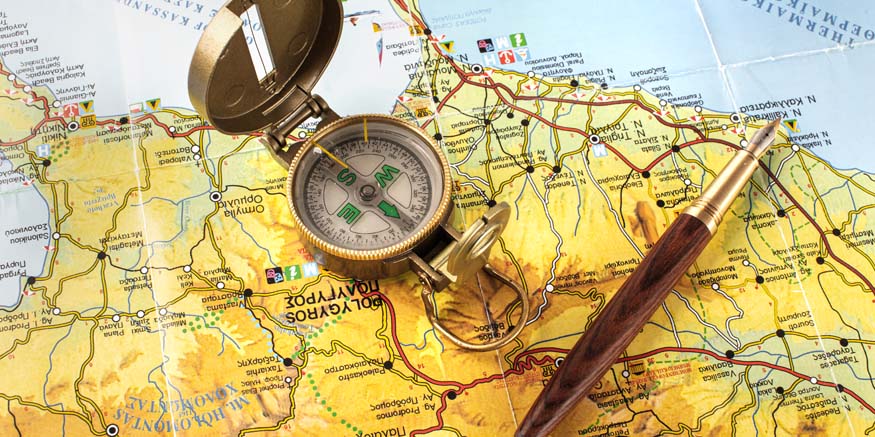Teach Your Kids About the Time Zones of the World

Time is an idea that controls our lives. It determines when we wake up, eat, and go to sleep. But have you ever considered why, in one place, it’s noon, but in another, it’s still morning or evening? Here comes the fascinating role of time zone.
In today’s linked world, kids need to understand time zones. As parents, we may communicate this idea to our children in a fun and engaging manner. In this blog, we’ll discover more about this concept with the goal of teaching kids about time zones.
Understanding Time Zone and Its Need
Teaching time zones to the kids can be overwhelming. Various locations on Earth experience different times of day naturally. Due to this, the concept of standardized time zones was created by humans. Time zones are regions of our world that set their clocks in the same way.
You can start by explaining to kids that the Earth is divided into imaginary lines called meridians. Each meridian indicates a separate time zone. As the Earth revolves on its axis, various portions of the world experience daylight and darkness at different times. Due to this reason, the need for time zones emerges.
A simple visual depiction, such as a globe, can make this concept easier to understand. You can highlight the lines representing the various time zones. You can show the kids how these lines link to different parts of the world.
You can encourage your kid to ask questions and discuss why time zones exist and how they help us keep track of time throughout the world.
Exploring Different Time Zones Around the World
Time zones influence our everyday lives in many ways. Exploring time zone differences throughout the world can teach how people in different places plan their daily routines. As parents, you can teach and enlighten your kids about these differences.
Learning time zones is important so that each part of the earth can enjoy sunrise in the early morning and sunset in the evening. If not, you may be going to bed around midday and waking up at 9 PM! Here are a few steps you can take to make this concept easier to understand for your child:
- Start with Basics
- Teach about The Prime Meridian and Greenwich Mean Time (GMT)
- Time Zone Boundaries
- Daylight Saving Time
- Cultural Implications
Before going into the details of time zone changes, make sure to clear the basics of your kid. You can begin by clarifying that the Earth is divided into 24 time zones, each measuring around 15 degrees long in longitude. It allows people to manage their daily lives and keep track of time as the Earth revolves.
Once you make the fundamentals strong, introduce your child to the concept of Prime Meridian and Greenwich Mean Time (GMT). Prime Meridian is an imaginary line that divides the Earth’s Eastern and Western Hemispheres. Greenwich, England is the standard for Greenwich Mean Time (GMT).
GMT is used as a starting point for time zone calculations all around the world. You can also show them the calculation of how some places are ahead of or behind in time zones based on GMT.
Time zone boundaries are usually set by lines of longitude. Longitudes are imaginary lines that extend from the North Pole to the South Pole. One hour of time difference is equivalent to 15 degrees of longitude. So, even if it’s noon where you live, it may be a different time for others living in some other country!
Explain this to your kid with a fun example. For example, Australia has three separate time zones. So, even though they’re in the same nation, it will be breakfast time in Sydney and lunchtime in Perth!
Daylight Saving Time (DST) is the practice of shifting the clocks one hour forward from standard time during the summer and back again in the fall to make greater use of natural daylight.
Explain to your kids the idea of DST. Not all nations observe DST. Also, the nations that do might start and finish it on various dates, resulting in temporary time zone disparities.
Discuss how time zone changes affect the customs and everyday lifestyle. Meal times, job schedules, and even television programming may vary depending on the local time zone. Understanding these variations promotes a deeper awareness of the world’s different cultures and lifestyles.
Examples of Different Time Zones
Suppose you took a flight from New Delhi at 00:10 AM on May 13th and got in Paris at 06:30 AM after a nine-and-a-half-hour travel. You arrived almost 3 and a half hours early. This happens to anybody who travels from one continent to another. The primary reason is that New Delhi is three and a half hours ahead of Paris. Similarly, when the time in New Delhi is 12:30 PM, it is 08:00 AM in London, 03:00 AM in New York, and around 05:00 PM in Sydney. This is the power of time zones.
Fun Facts About Learning Time Zones
People in other time zones have different clock times than you. They might be a few hours behind you, ahead of you, or on a different day. It depends on whatever time zone they are in. Here are some time zone facts for your kids:
- India, with a single time zone, has the same time across the country, despite significant longitudinal variations.
- Antarctica has many time zones, owing mostly to the presence of international research stations.
- Singapore set its clocks forward by 30 minutes to match Tokyo’s time zone.
Exploring time zone shifts involves more than basic geography; it is an opportunity to learn how time connects our planet. Teaching kids about time zone broadens their global awareness and prepares them to navigate our big world. Explore the world of learning with Billabong High International School as we prepare students to excel globally. Enroll now to unlock your child’s potential!










